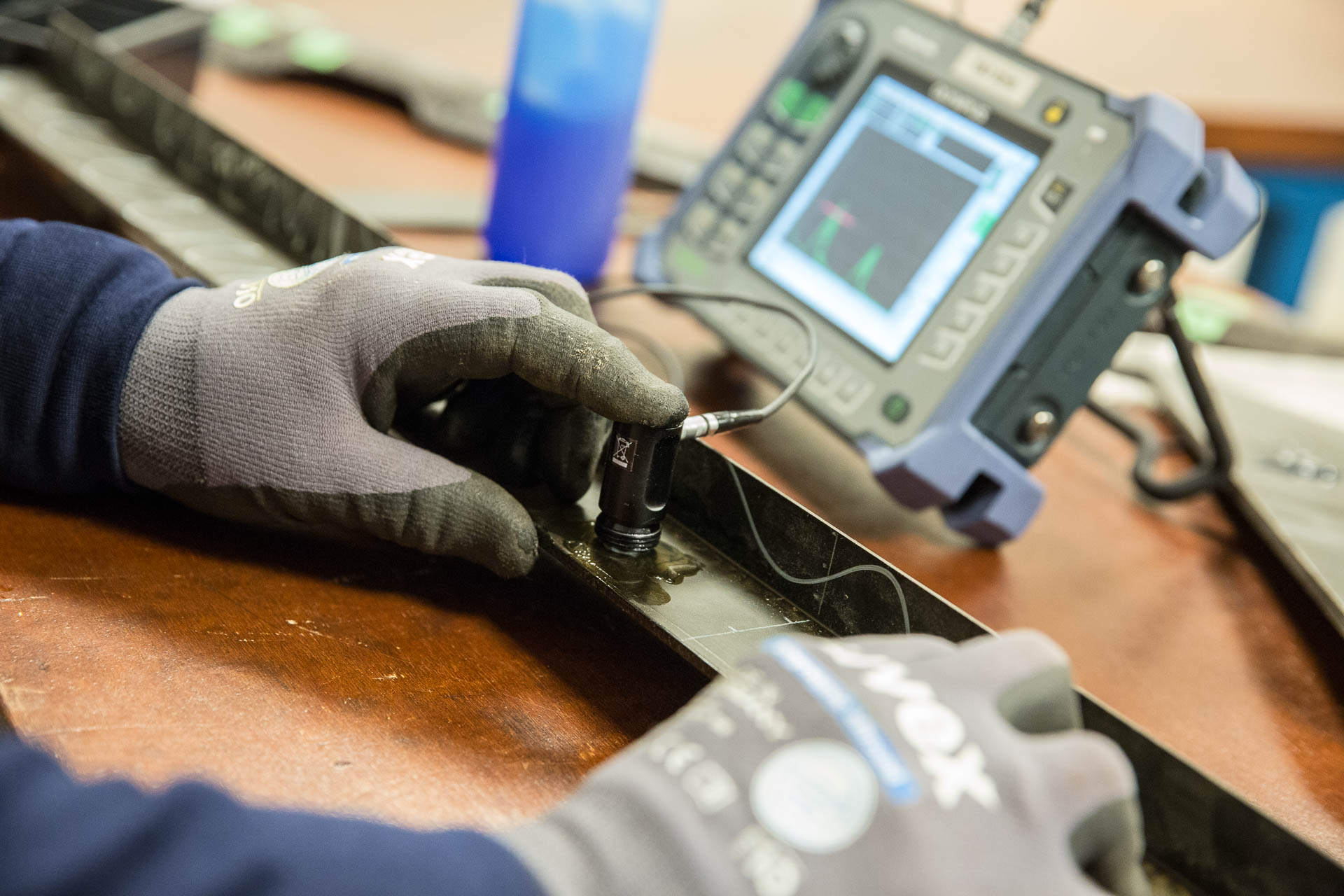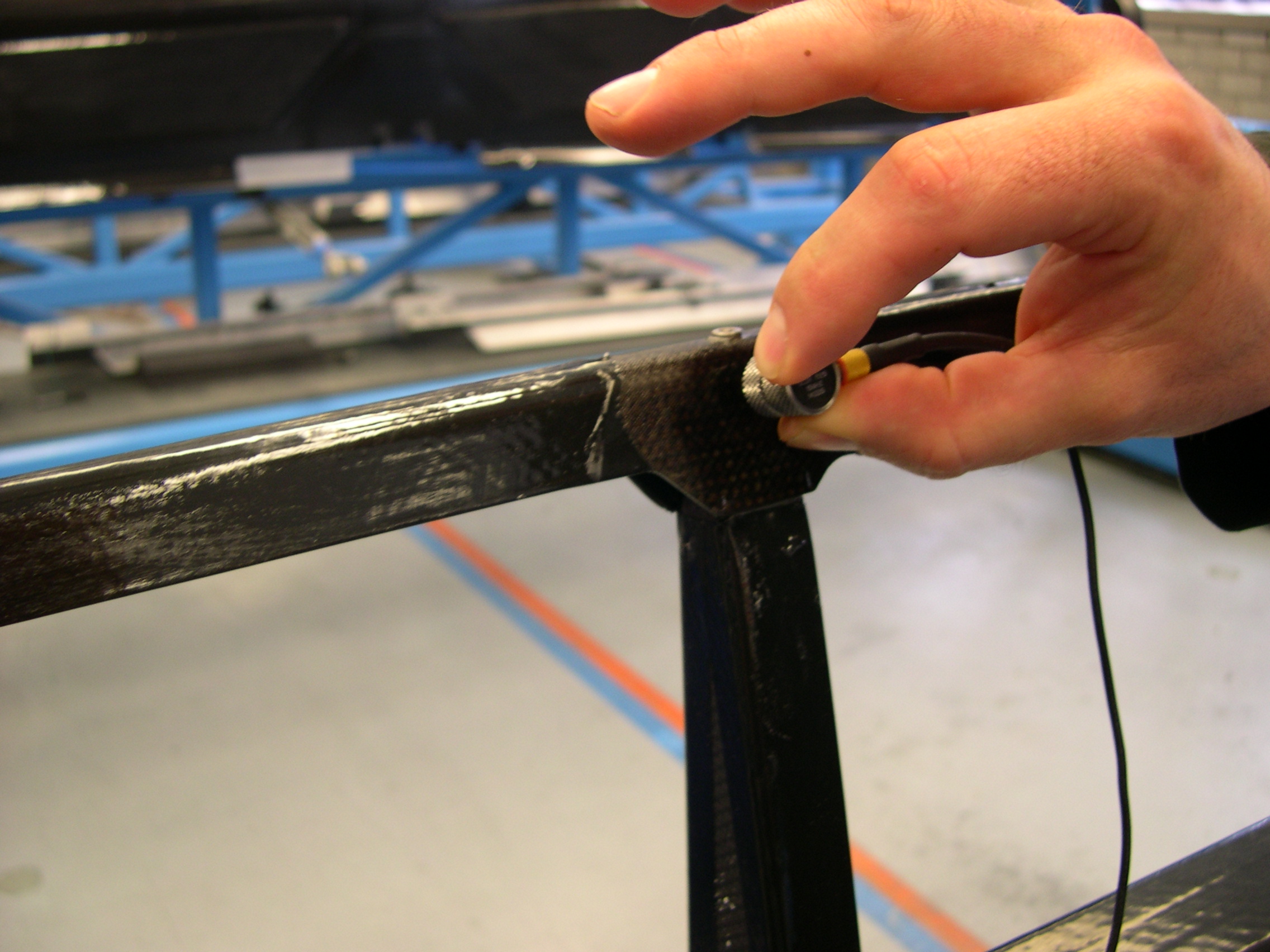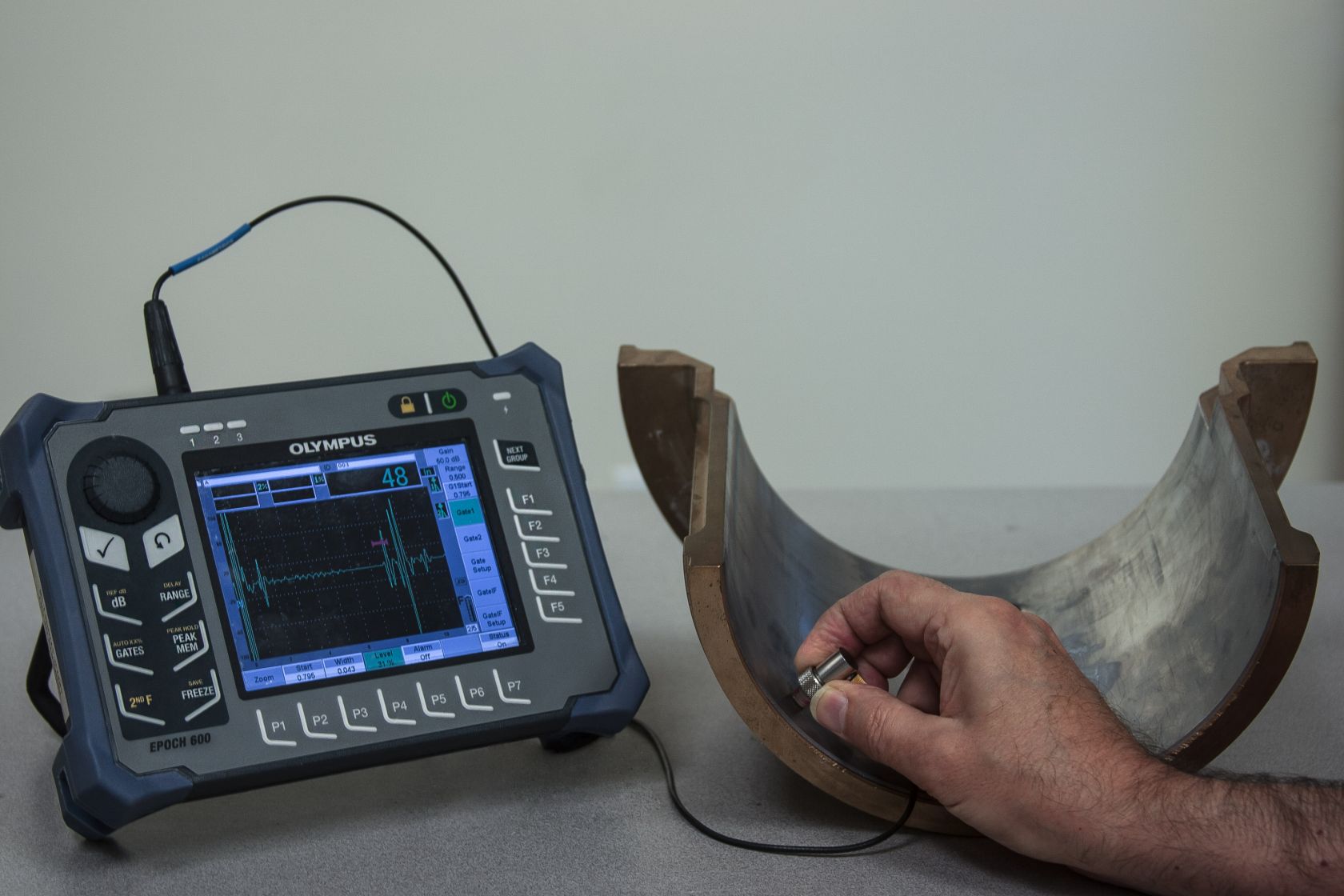Ultrasonic testing
Ultrasonic testing (UT) is an NDO method in which sound waves are introduced into a material. These will be reflected by any defects and/or the geometry of the object. By recording the reflected waves, the defects can be detected.
Before starting the inspection, the surface must be cleaned. In the determination of the residual wall thickness, in most cases the coating may remain.

Inaudible sound waves will be introduced into the object by means of a sound generator (probe/transducer). These sound waves will be reflected at the location of a defect or geometry. When the sound waves come back to the probe they will be detected, this is called a reflector.
In the probe, the received sound will be transformed into an electric signal. Which will be displayed on a screen. The position, shape and height of the signal on the screen will be interpreted by the inspector. The assessment will be made on the basis of the required standard and/or specification. The reflector shall be assessed in accordance with the required standard, resulting in acceptable or unacceptable (in case of wall thickness measurement, the wall thickness will be reported).
In ultrasonic testing, different types of probes can be used. A distinction is made between straight and angled probes. In the case of angled probes, the generated sound will be introduced into the material at a certain angle, whereas for the straight probes the generated sound will be introduced into the material perpendicular to the surface. Both groups of probes can be fitted with a combined transmitter and receiver or with separate transmitter and receiver (SE or TR probe).
The most common testing is be carried out by transmitting the sound and absorbing the reflection (pulse echo). It is also possible to irradiate an object, in which case transmitter and receiver are (must be) placed on opposing sides of the object. For each application, the best probe choice must be made in order to perform an optimal test.

If the inspector has detailed knowledge of the object, knows the manufacturing process and/or is familiar with the conditions of use, this will have a positive effect on the ultrasonic test.

Ultrasonic testing of objects made of various materials for surface and internal defects, de-laminations, (fatigue) cracks, determination of wall thickness and defects.
The research has many application possibilities, but is specifically applied to the following products:
- Cast and forged parts of Aluminium, Steel and Brass;
- Weld joints of materials with a homogeneous fine structure;
- Sheet material of fuselage and semi-finished products;
- Wall thickness determination in aviation;
- Delamination and deformation of composite components occurring in aircraft construction;
The inspectors are trained according to EN4179.
Tests may take place in accordance with all applicable standards and requirements of the principals and ASTM-E-1444.

